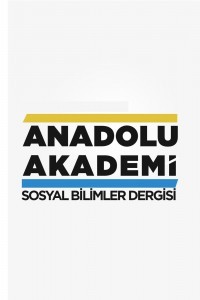Fintek’lerde Sürdürülebilirlik: TBL Yaklaşımının Değerlendirmesi
Son on yılda Fintek’lerin ortaya çıkışı herkesin dikkatini çekti: ciddi birer rakibe dönüşmeleri nedeni ile finans sektörü çalışanlarının, yatırımcıların ve herhangi bir finansal servis kullanan herkesin. Bu kadar büyük bir başarı ile, Fintek’lerin benzersiz iş modellerini, güçlü ve zayıf yönlerinii anlamak için mikroskop altına alınması şaşırtıcı değil. Fintek’lerimn başarısını araştıran çeşitli çalışmalar olsa da, Fintek’lerin bu başarıyı nasıl sürdürebileceğine veya ilk etapta nasıl elde edebileceğine odaklanan pek fazla çalışma yok. Bu makale, bu boşluğu doldurmak için, bir Fintek’in başarıyı yakalamak ve büyümesini devam ettirmek için sürdürülebilirliği nasıl sağlayabileceğini keşfetmeyi amaçlamaktadır. Bir çerçeve sağlaması için, bu makale Elkington’un “Sürdürülebilirliğin Üç Temel Çizgisi” teorisini ele almakta ve Fintek’lerin her bir çizgiyi yerine getirme yeteneklerini değerlendirmektedir. Fintek’lerin iş modellleri nedeniyle sosyal ve çevresel alanlarda belirli avantajlara sahip oldukları ve ekonomik çizgiyi yerine getirmek için sundukları içç görülerin değerine ve kalitesine dikkat etmeleri gerektiği sonucuna varmaktadır.
Anahtar Kelimeler:
Fintek, Sürdürülebilirlik, dijital finans
Sustainability in Fintechs: Evaluation of TBL Approach
For the last decade, emergence of Fintechs caught the attention of everyone: Individuals working in the financial sector because Fintechs started to become serious competitors, investors and everyone else who received some sort of financial service from a financial institution. With a success this big, it is no surprise that Fintechs were put under a microscope to understand their unique business models, strengths, and weaknesses. While there are certain studies that explore the success of Fintechs, there aren’t many that focus on how Fintechs can maintain this success, or how they could achieve it in the first place. In an effort to fill that gap, this article aims at exploring how a Fintech can achieve full sustainability to maintain its success and growth. To provide a framework, this paper takes Elkington’s Three Bottom Lines of Sustainability and evaluates Fintechs’ ability to fulfill each line. It concludes that due to their business models Fintechs hold certain advantages in the social and environment lines, while they need to pay attention to the value and the quality of their offered insights to fulfill the economic line.
Keywords:
fintech, sustainability, digital finance,
___
- Ahmad, Rezaah. 2020. “Funding and The Lifecycle of a Fintech.” Global Banking & Finance Review, January 17.
- Alderman, Liz. 2020. “Our Cash-Free Future Is Getting Closer.” The New York Times, July 6.
- Alhaddi, Hanan. 2015. “Triple Bottom Line and Sustainability: A Literature Review.” Business and Management Studies 1(2):6–10. doi: 10.11114/bms.v1i2.752.
- Anon. 2019. “Are We Sleepwalking towards a Cashless Future? - Lessons from Sweden.” Visa Navigate. Retrieved April 23, 2021 (https://navigate.visa.com/europe/future-of-money/sleep-walking-towards-a-cashless-future/).
- Bagla, Kumar Ramesh. n.d. “Gaps in Customer Satisfactionwith Digital Wallets: Challenge for Sustainability.”
- Bocken, Nancy M. P., Samuel W. Short, Rana Padmakshi, and Steve Evans. 2014. “A Literature and Practice Review to Develop Sustainable Business Model Archetypes.” Journal of Cleaner Production 65:42–56.
- David-West, Olayinka, Nkemdilim Iheanachor, and Immanuel Umukoro. 2019. “Sustainable Business Models for the Creation of Mobile Financial Services in Nigeria.” Journal of Innovation & Knowledge 5:105–16.
- Desai, Falguni. 2015. “The Evolution Of Fintech.” Forbes. Retrieved March 25, 2021 (https://www.forbes.com/sites/falgunidesai/2015/12/13/the-evolution-of-fintech/?sh=330f765d7175).
- Elkington, John. 1997. Cannibals with Forks – Triple Bottom Line of 21st Century Business. Oxford: Capstone Publishing Ltd.
- Geylan, Zeynep, and Halim Memiş. 2021. “Reating an AI-Based Personal Assistant: Case Study of Işbank ‘Maxi.’” Journal of Digital Banking 5(4):321–28.
- IBM. 2015. Designing a Sustainable Digital Bank. White Paper Executive Summary. New York.
- Iheanachor, Nkemdilim, Yinka David-West, and Immanuel Ovemeso Umukoro. 2021. “Business Model Innovation at the Bottom of the Pyramid – A Case of Mobile Money Agents.” Journal of Business Research 127:96–107.
- John, Elkington. 1994. “Towards the Sustainable Corporation: Win-Win-Win Business Strategies for Sustainable Development.” California Management Review 36(2).
- Kuhlman, Tom, and John Farrington. 2010. “What Is Sustainability?” Sustainability 2:3436–48.
- Lele, Shekhar. 2018. “Measuring Innovation.” FinTech Insights. Retrieved April 4, 2021 (https://www.pwc.in/consulting/financial-services/fintech/fintech-insights/measuring-innovation.html).
- Mejiha-Escobar, Juan, Juan David Gonzalez Ruiz, and Eduardo Duque. 2020. “Sustainable Financial Products in the Latin America Banking Industry: Current Status and Insights.” Sustainability 12(14):1–25.
- Moro - Visconti, Roberto, Salvador Cruz Rambaud, and Joaquin Lopez Pascual. 2020. “Sustainability in FinTechs: An Explanation through Business Model Scalability and Market Valuation.” Sustainability 12:1–24. doi: 10.3390/su122410316.
- Pizzi, Simone, Leonardo Corbo, and Andrea Caputo. 2020. “Fintech and SMEs Sustainable Business Models: Reflections and Considerations for a Circular Economy.” Journal of Cleaner Production 281.
- United Nations. 2018. Igniting SDG Progress Through Digital Financial Inclusion.
- ISSN: 2667-5471
- Yayın Aralığı: Yılda 2 Sayı
- Başlangıç: 2019
- Yayıncı: Mustafa KARACA
Sayıdaki Diğer Makaleler
Fintek’lerde Sürdürülebilirlik: TBL Yaklaşımının Değerlendirmesi
DEDE KORKUT HİKÂYELERİ’NDE /+DAn/ ABLATİF HÂLİ EKİNİN YAPI VE GÖREV BAKIMINDAN FONKSİYONLARI ÜZERİNE
Efe YAMAN, Oğuz Göktuğ YUVALI, Özay Nuri AKSOY
AİLE İŞLETMELERİNDE ÖRGÜTSEL DEMOKRASİNİN İNOVASYONA ETKİSİ
Çağatay Han TORUN, Fatih Ferhat ÇETİNKAYA
DEFINITION OF DIPLOMACY AND TYPES OF DIPLOMACY USED BETWEEN STATES
Elif Nisa YAYLA, Buket KAYA, Özge ÜSTÜN
Sefa ÇATAL, Birkan Anıl YILMAZ
TROIA VE ÇANAKKALE SAVAŞLARI ÜZERİNDEN TARİH-COĞRAFYA KORELASYONU
ÇAĞIN TEKNOLOJİK BAĞIMLILIĞI: SOSYOTELİZM (KAVRAMSAL BİR BAKIŞ)
